Small but nice: the region with the smallest area and population of the entire country can be found between Turin and Mont Blanc. Aosta Valley is semi-autonomous and has a special status. Reigned by the House of Savoy for a long time, nowadays the region is bilingual (Italian and French) and dominated by agriculture and tourism. The glorious, multifaceted nature between mountain giants in the Swiss-French borderland and rambling, protected parks makes the region worth seeing. You shouldn’t miss out on the following top 10 sights of Aosta Valley!
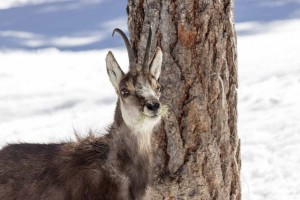
©Bigstock.com/xiaoma
Gran Paradiso National Park
Italy’s first national park with an impressive total area of 70,318 hectare is located at the border between Aosta Valley, Piedmont and France. Founded in 1922, Gran Paradiso National Park turned from former royal hunting grounds into one of Italy’s most glorious areas. It is home of the last surviving alpine ibexes. The national park is shaped by imposing mountain ranges with the eponymous Gran Paradiso standing tallest at 4,061 m. You can go on fascinating guided hikes from the six municipalities located inside the park area.
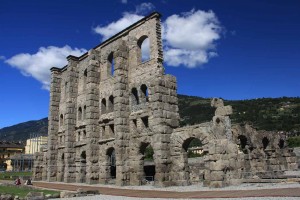
©Bigstock.com/HondaFireblade
Aosta’s Roman Theatre
Roman forces conquered the regional capital Aosta in 25 BC during Augustus’ military campaign in the Alps. The town blossomed as it became an important transport nodal point. Remnants of a four-storied Roman theatre in the heart of Aosta are visible to this day. It originally seated 4,000 spectators. The 22 m high stage wall and remnants of the forums have been used again as a stage for concerts and theatre performances since 2011. You can also see the ruins of an old marketplace, Roman thermae and an amphitheatre dating back to the reign of Claudius in the close surroundings.
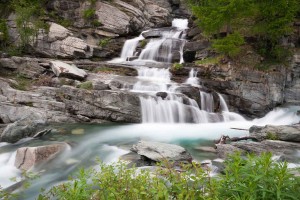
©Bigstock.com/CoffeeChocolates
Lillaz Waterfalls
A walk of approx. ten minutes leads from the municipality Lillaz to several rock slopes with powerful water masses plunging across them into the depths. The waterfalls with an imposing total height of 150 m rush down across three levels unleashing primal forces. You can appraise them from up close via three hiking trails. Don’t forget your rain shield, because it can get pretty wet here.
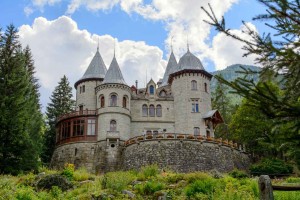
©Bigstock.com/Photoerick
Castel Savoia
Margherita, wife of the Italian King Umberto I, greatly appreciated Aosta Valley. After several holidays she had a superb villa known for its mixture of different styles built. You’ll find five neo-Gothic towers in different heights and shapes, for example. The premises are rather multifaceted as well. You will also be wowed by the large park, the pine forest and the rock garden. Enjoying direct view of the surrounding glaciers, you find a small piece of paradise on earth here.
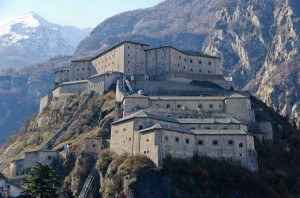
©Bigstock.com/Photoerick
Fort Bard
The Dora Baltea river runs through the entire Aosta Valley flowing into Po River. On its way through the region it also crosses the small village Bard, high above which a world-renowned fortress is located. This Castel Savoia was the site of different movies, such as the blockbuster “Avengers: Age of Ultron”. While it’s rather unlikely that you’ll meet Captain American and Iron Man during your visitation, the impressive location coupled with various museums and exhibitions is quite the sight to behold, too.
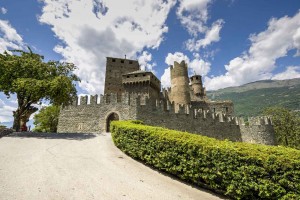
©Bigstock.com/Claudiogiovanni
Fénis Castle
Care for a trip into the Middle Ages? Then you might want to go to Fénis in the north of the region, home of one of Aosta Valley’s most famous fortifications. First documented in 1242, the pentagonal castle is surrounded by duplex walls, numerous towers and watch towers. Once you’ve strode the mighty defensive fortification you will find a large courtyard with a 15th century fresco and the three-storey castle with a chapel, servants’ quarters, the kitchen and a weapon room.
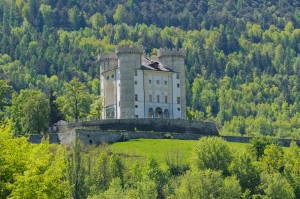
©Bigstock.com/Photoerick
Aymavilles Castle
An imposing castle rises high on a moraine hill in the centre of the village Aymavilles. It was probably built in the 13th century and constantly extended and rebuilt over the following decades and centuries. This resulted in a mix of styles, such as the baroque loggias between the four high-rising, cylindrical towers, which were only built around 1730. The interior – sadly closed to the public – was remodelled according to Baroque principles, too. In summer the small castle park is site of cultural events.
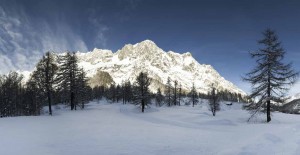
©Bigstock.com/Massimo De Candido
Monte Bianco
You might know the largest mountain of the Alps – 4,810 m high, located between France and Italy – better as Mont Blanc. Both countries assert their claims to this giant. Mountaineers and skiers cherish Monte Bianco for its challenges and amazing variety. You’ll also find many a charming village here, such as Courmayeur located at the entrance of Monte Bianco Tunnel. From here you can go on exciting hiking and ski tours depending on the season.
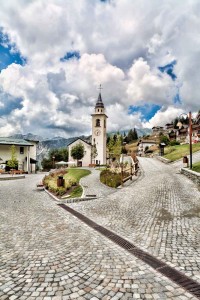
©Bigstock.com/DigitalFabiani
Chamois
Many hotels and holiday villages promote their traffic-calmed location. The small municipality Chamois gives this term a new meaning, as this village at an altitude of 1,808 m with just over 100 inhabitants can only be reached by cable car or plane. Look forward pure and pristine naturalness. The crystal-clear mountain lake Lod is one of the region’s most idyllic spots. During a walk through the village you’ll come across the small but nice parish church that perfectly fits into the quiet atmosphere of this place. You can’t get away any further from the daily grind than in Chamois!
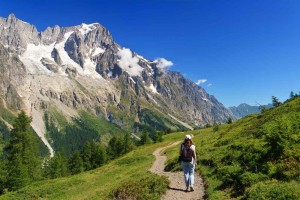
©Bigstock.com/Val Ferret
Val Ferret
A wide valley particularly popular with leisure drivers stretches south of the Monte Bianco Group. There’s a ten km long road leading through Val Ferret, not to be confused with the valley of the same name on the Swiss side of the over 2,700 m high mountains. You drive though diverse flora always escorted by the stream Dora di Ferret and imposing mountain summits. This area is also great for hikes and walks. You can even go on short mountain tours in Val Ferret.
Be enchanted by the fascinating grand nature coupled with witnesses of early history, idyllic villages and architectural diversity, and discover the sights of Aosta Valley. Looking for more travel tips for Italy? Then ZAINOO is the best place for you!